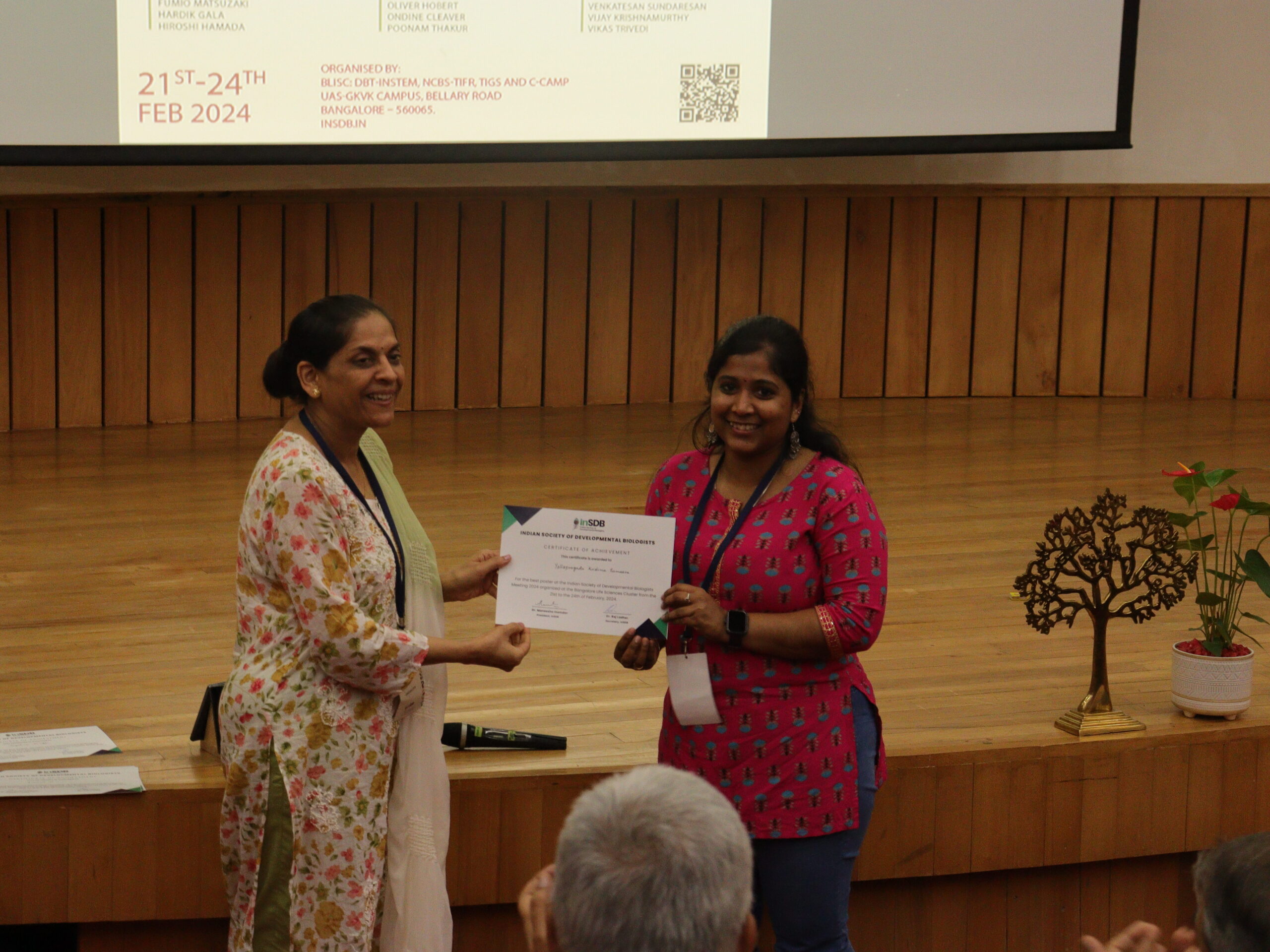We talk to Y K Sammera, an integrated PhD student in Dr. Ramkumar Sambasivan’s lab at IISER-Tirupati. She bagged the best poster prize at InSDB24. Read to know more about her work and her experience at the conference.

Tell us about the work you presented in your poster.
My lab broadly works to understand the patterning mechanisms of mesoderm-a germ layer. Mesoderm gives rise to various kinds of muscles ranging from the face, heart, and vertebral column to the legs and limb muscles. What triggers the cells of mesoderm to differentiate into specific kinds of cells is not well understood. While we understand that cells receive instructions early in development, the mechanism of how this information is translated into specific cell fates is still unclear.
If there is a signal, how is it conveying this message? How does the cell know that it has to become a specific kind of cell and occupy a specific region? I am interested in finding answers to these questions.
Interesting! How do you approach these questions?
I use a 3D model called gastruloids which mimic a gastrulating stage embryo. This is a relatively new system in the field. We use mouse embryonic stem cells to make it. Gastruloids are essentially embryos in a dish. They are created by replicating conditions that are similar to the womb. By providing specific cues, we guide the cells to form a 3D structure resembling the gastrulating stage, even outside the natural womb environment.
It must be exciting to work with such latest models! So, what have you found so far using these gastruloids?
From our results, it looks like retinoic acid signaling, often overlooked in this context but studied for its role in posterior development, could be playing a critical role in the decision of divergence of mesoderm into anterior and posterior parts.
How did you get into this line of research, and what do you find most exciting about your project?
Finding out how mesoderm divergence happens was an ongoing interest in the lab. My seniors have worked on understanding the development of a few of the anterior progenitors. My immediate senior was working to find the functions of a few genes that could be involved in the process. When I joined the lab, I took over this work.
The most exciting part of the project would be working with gastruloids! These are self-organizing systems and are very finicky. Hence, it is also the most difficult part of the project.
Shifting gears a bit, were there any presentations or posters that caught your attention?
The poster by Avik from Dr. Shivprasad’s lab at NCBS! I’m not very fond of plant biology, but the way he explained and the presentation of the poster was really interesting.
Apart from this, two other interesting ones for me were one of the posters from Dr. Dasaradhi Palakodeti’s lab and another from an IIT Kanpur student who was working on bone diseases.
So yeah, these are the three that I remember the most, but all the posters I visited were good works.
What was the most exciting part of the conference? What are some of the things that got your attention?
This was my first InSDB meeting, and I did not know about society’s history. Prof. Lakhotia’s talk on the first day about the history of the devbio research in India and how InSDB has grown over the years was quite interesting because of this reason. Hearing from individuals like Prof. Masatoshi Takeichi, who shaped a field and made significant discoveries was another highlight of the conference for me. The conference also helped me to learn about all the latest developments that are happening in the field, outside of my work.
Moving forward, what are your plans?
Currently, I am finishing up my PhD. I want to do a postdoc in this field, but I do have an inclination towards industry. Hence, I am also figuring out which path I want to take.
Thanks for sharing your work with us and best of luck finding the best path for you!





